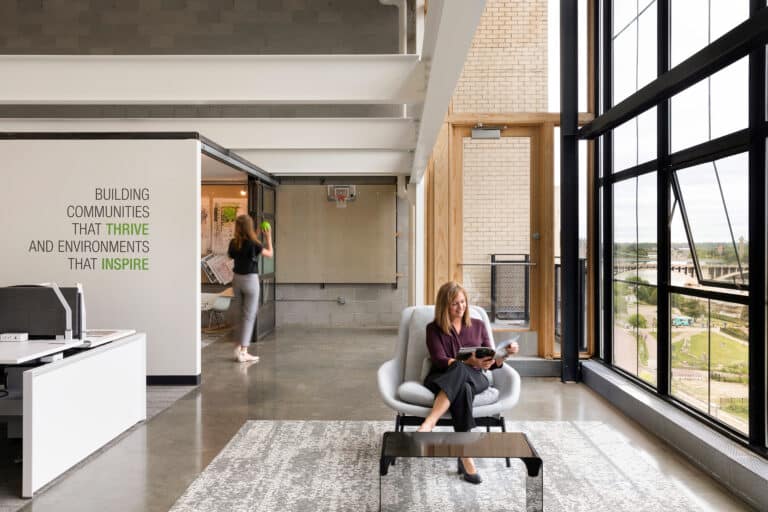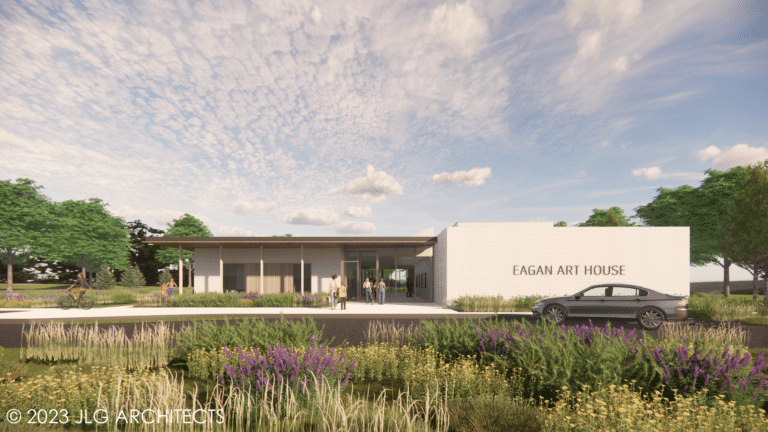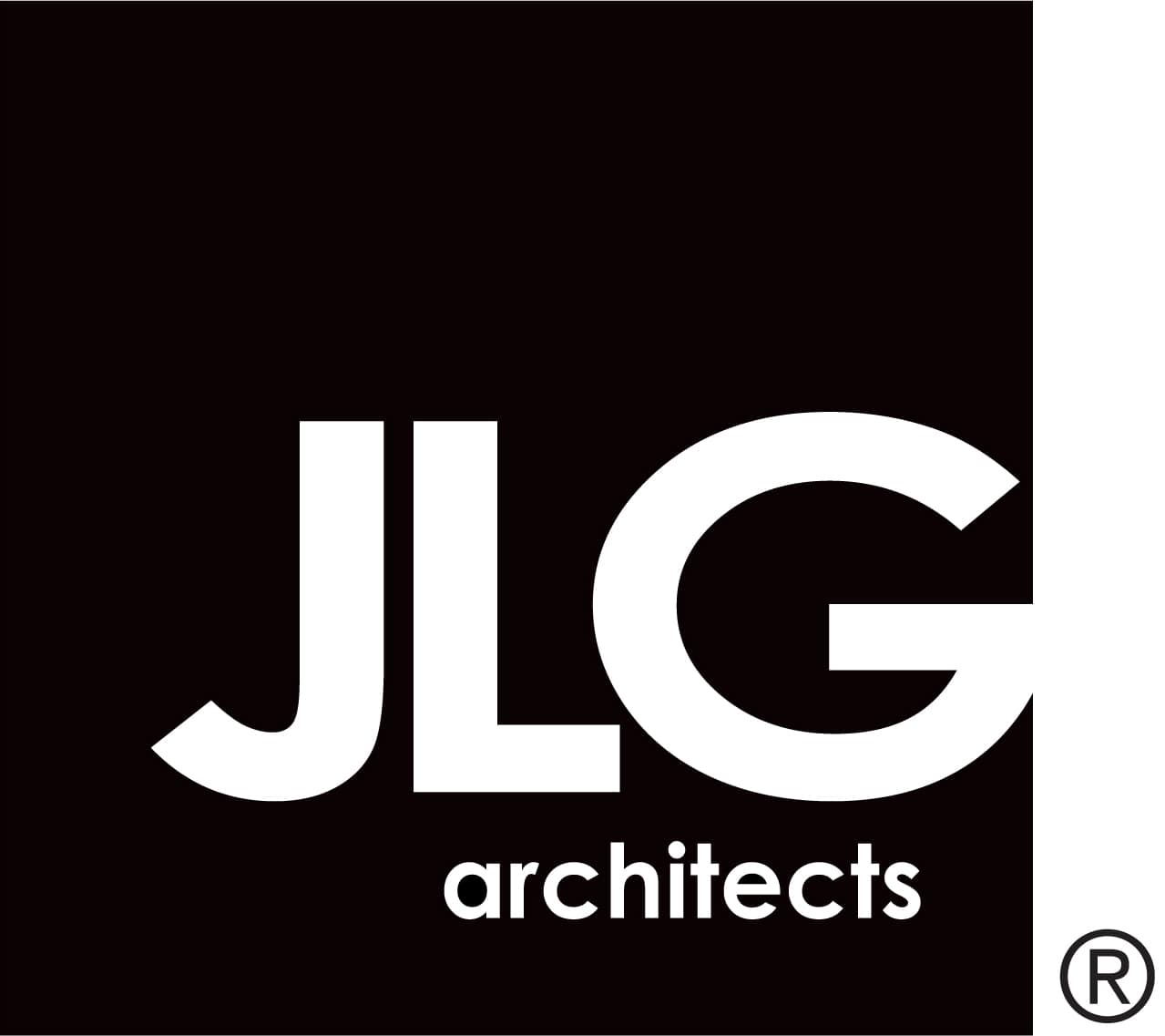If you’re a business owner waiting for factual proof of how a sustainably designed office can provide enough benefit to outweigh the initial cost, you’re not alone. With new data emerging to prove its cost and company-saving value, the topic of sustainable office design is no longer getting tabled.
In 2013, the University of North Dakota in Grand Forks, N.D., began working with JLG Architects as the design lead for the new alumni center, creating a real-life example of sustainable practices in action.
This was not solely a cost-saving and aesthetic design mission – UND was also motivated to educate the community, visitors, and students by actively demonstrating sustainable investments in extreme cold climates.
To provide proof of performance with verified data, the university closely evaluated the center’s net-zero design over its first seven years. Ultimately, the studies were quick to confirm the benefits, outperforming early predictions with cost savings substantial enough to convince any CEO to re-examine their workspace.
UND’s Gorecki Alumni
Introducing North Dakota’s first and only LEED® (Leadership in Energy and Environmental Design) Platinum certified commercial building — UND’s Gorecki Alumni Center (GAC). Thought of as the “front door” and first impression of the campus, the alumni center is designed to welcome all inclusively — just ask the full-time tour guide who is eager to lead the way.
To complete the university’s vision for the center, JLG was tasked with creating a highly sustainable design with a focus on indoor/outdoor connectivity that would provide a transition between the campus’ traditional collegiate gothic style, and the future-focus of the nearby technology centers.
What it achieved, with the help of UND and generous project partners, was a gateway to the future of sustainable design practices with measurable benefits. Altogether, it had not only met, but also exceeded all national benchmarks in sustainable design certification, showing that high performance design can be achieved while lowering total cost of ownership.
Proven Studies + Savings
With the idea that sustainable design practices are only as good as their proven results, the team, led by JLG Architects, embarked on a seven-year post-occupancy evaluation spanning 2013 to 2020, studying the building’s energy efficiency, cost savings, and employee satisfaction. What they found is nothing short of astonishing.
On average, the 30,000 square-foot building is achieving a 54% energy use reduction, compared to national usage in climates such as North Dakota. The study also showed corresponding reduction in CO2 emissions, and a 38% reduction in water use, compared to standard buildings. In fact, actual energy has achieved about $277,000 of energy cost savings (2013-2020) compared to baseline, and the building has shown potential to be $950,000 net revenue-positive over 30 years.
The GAC’s progressive heating and cooling system has also demonstrated impressive results. The highly efficient system is the first-of-its-kind in extreme cold, providing 100% of the building’s heating and cooling from a ground source heat pump system. Unlike typical systems, there is no backup or supplemental heating and cooling equipment needed. The unique process regulates temps and dramatically reduces energy costs, saving UND approximately $38,000 in annual energy costs, according to city utility costs.
Welcoming Wellness
Inside the alumni center, JLG strategically designed every square foot to minimize resource use, harvest natural light, and optimize the environment for employees and visitors to thrive. The plan was a massive success, now serving as a perfect case study to finally demonstrate long-term cost benefits in sustainably designed commercial properties — the structures that typically have the largest footprint.
Every day since completion, the building and university is collecting data, surveying its overall efficiency, occupant comfort, and usability. When the results were tallied in November 2020, it was even more positive than the partners had predicted. An occupant survey showed the GAC outperforms the UC Berkley CBE Database (97% satisfied), which represents thousands of projects across the country. With 97% of the building’s occupied spaces having outdoor views, it’s no wonder it scored well with occupants.
Inhale, Exhale, Engage
The alumni center’s indoor common spaces near large glass areas are closely connected to outdoor features like the firepit and seating area to help bring the outside in. These spaces are not simply for vanity—engaging spatial experiences have been known to increase brain function, reduce stress, and even improve eye health.
While the first floor is an open concept that can transition per occasion, the second and third floors are designed with employees in mind. Here, staff can adjust lighting and set their own temperature with comfort controls.
Throughout the building, superior air quality is emphasized. The GAC’s engineering provides 25% more outside air to the inside than typical buildings and uses 60% less energy to do so. Thanks to abundant natural light and better air quality, the post-occupancy survey showed the GAC’s staff is averaging 15% more productivity with fewer sick days.
Restoring People & Place
The University of North Dakota will experience the cost-saving ripples of sustainable design and engineering for decades to come — while fulfilling their educational promise to past and future alumni. With multi-faceted purpose and inclusive public space for students and community alike, the GAC’s concept attracted many donors – one even gifting $1.5 million in support of the building’s LEED® Platinum goals.
Since opening in 2013, the alumni center has continued to impress by hosting hundreds of thousands of people at events and tours, making it the most influential, sustainable building in the region.
The energy evaluation of the Gorecki Alumni Center is only the beginning of a continuous learning process on the path to a healthier environment. As this industry succeeds in delivering statistical evidence of long-term value, the universal hope is that sustainable design becomes the new norm and baseline standard for construction and design.
If you’re still pondering the value of a workspace that promotes wellness and environmental efficiency, you might be missing out on a boom to your bottom line.





